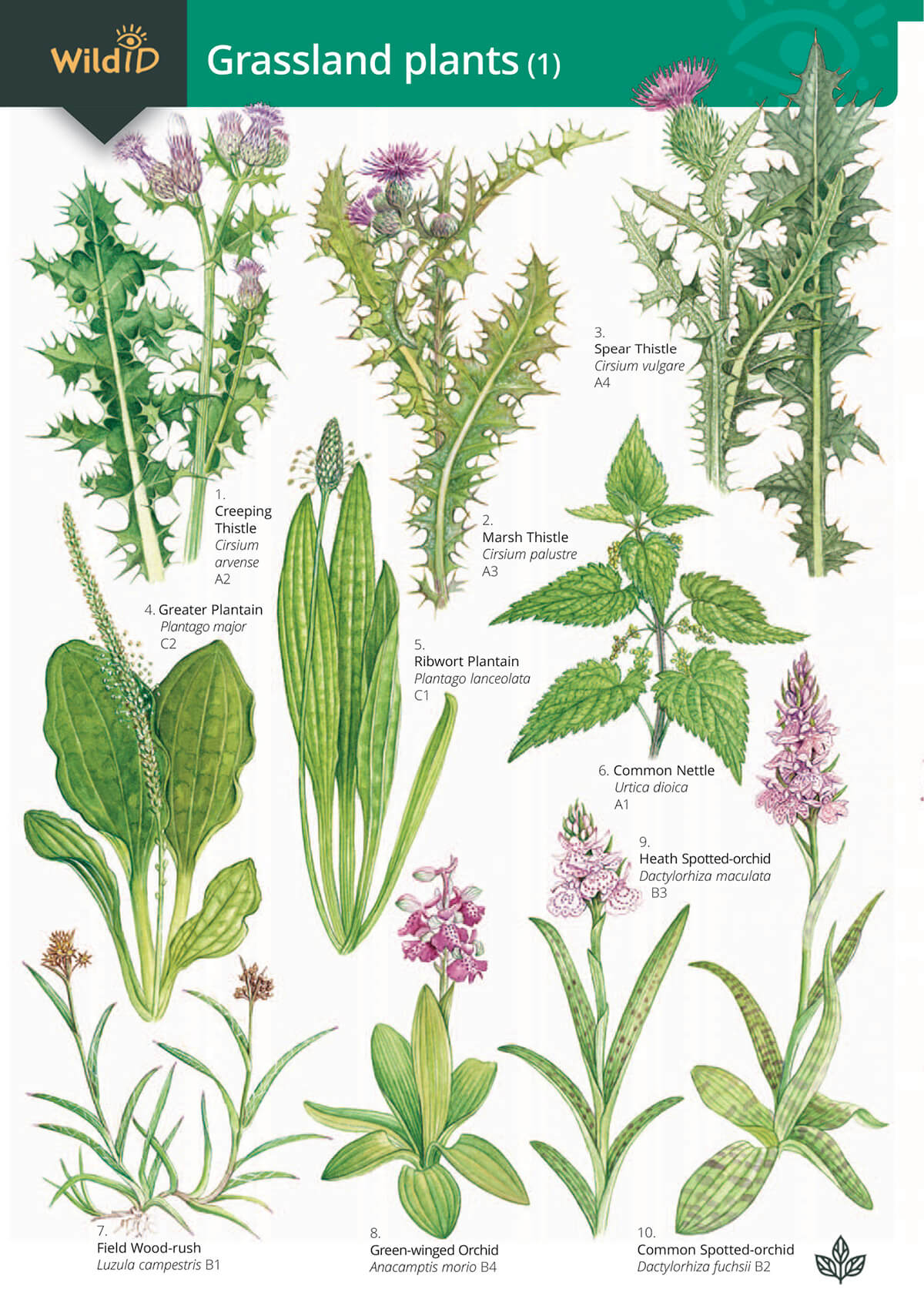Meadow in My Garden
Grassland Plants 1
Grassland Plants 1
Couldn't load pickup availability
Splashproof 12-panel fold-out field guide
Can be wiped clean
Robust when working outdoors
Rucksack sized - 24.5cm x 17.5cm
This 12 page Identification Guide shows the most common plants of grasslands, other than those occurring on chalk or limestone - text by Mavis and Richard Gulliver, illustrations by Carol Roberts. Each chart is laminated to make it splashproof and robust for use outdoors. Clear colour illustrations and text by experts in the subject make these valuable resources for all age groups.
But what if you find a plant that is not in flower? Based on the authors’ many years of teaching botanical students, traditional wild flower guides are not much help here. So we’ve included a vegetative key to plants of acid and neutral grassland. This is a full identification key based on leaf characteristics. In particular, there is special guidance on identifying rosettes. A number of plants produce rosettes early in their growth cycle, and many respond to heavy grazing or trampling by adopting a rosette form.
Acid and neutral grassland is widespread across Britain and Ireland. Most common plants of grassland, except those occurring on chalk or limestone, feature in this guide. Acid grassland is found on soils with a low pH (under 5.5). By contrast neutral grassland is found on soils with a pH around 5.5-7.0. Many of these plants are most abundant where there has been little or no agricultural improvement such as drainage, ploughing or re-seeding. But you should find at least some of these species is most grasslands, including pasture, meadow, road verges and lawns.








